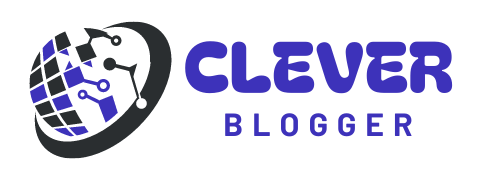In today’s digital age, the importance of User Experience (UX) in the development of web applications cannot be overstated. While B2C (Business-to-Consumer) applications often receive significant attention for their user interfaces and ease of use, B2B (Business-to-Business) web applications also require careful consideration of UX principles. B2B applications typically serve business professionals, offering complex features and functions that streamline workflow, improve productivity, and facilitate data management. Without proper attention to UX, even the most feature-rich B2B applications can fail to deliver the desired results.
This article explores the Important UX Rules for B2B Web Applications and highlights best practices for maximizing usability to create more efficient and intuitive platforms.
Why UX Matters in B2B Web Applications
Unlike B2C applications, which prioritize user engagement and emotional connection, B2B applications are focused on solving specific business problems. These applications must be efficient, reliable, and easy to use, as they often involve handling complex tasks like project management, customer relationship management (CRM), or supply chain management.
A well-designed UX in B2B web applications offers several key benefits:
- Increased Productivity: A user-friendly interface minimizes the time it takes for employees to complete tasks, reducing friction in daily workflows. This leads to higher productivity and fewer errors.
- Lower Training Costs: When the application is intuitive, employees require less training to understand how to use it effectively. This is especially important for businesses onboarding new users.
- Higher User Satisfaction: If the application is easy to navigate and performs well, users will be more satisfied and less likely to abandon the software for competitors.
- Improved Adoption Rates: A well-designed UX encourages users to embrace the application more quickly and fully. Poor UX, on the other hand, can lead to resistance or limited use of the application’s features.
In the B2B space, where efficiency and accuracy are critical, optimizing the UX of web applications can have a direct impact on a company’s bottom line.
Best Practices to Maximize Usability in B2B Web Applications
To design an effective B2B web application, UX must be carefully planned and executed. Below are the best practices for ensuring a seamless and productive user experience:
1. Understand User Needs Through Research
Before diving into the design and development process, it’s crucial to understand the target audience. B2B applications typically serve a specific group of users—employees, managers, or external partners—each with different needs and expectations. Conduct thorough user research, which may include interviews, surveys, and user testing, to gather insights into how users interact with the application.
- Identify Pain Points: Determine common frustrations or bottlenecks users encounter in their current processes.
- Define User Goals: Understand what users aim to achieve when using the application, whether it’s increasing efficiency, accessing data, or managing workflows.
By knowing your audience, you can tailor the UX design to meet their specific requirements, resulting in a more effective and satisfying user experience.
2. Simplify Complex Workflows
B2B applications are often designed to handle intricate processes, which can result in complicated workflows. Simplifying these workflows is key to enhancing usability. An intuitive application design should streamline complex tasks, making it easier for users to complete their work without unnecessary steps or confusion.
- Break Down Tasks: Break complex tasks into smaller, manageable steps. Guide users through processes with clear instructions and visual cues.
- Automation: Where possible, automate repetitive tasks to save time and reduce errors.
- Consistency: Ensure consistency in the design across different sections of the application to minimize the learning curve for users.
The goal is to create a flow that allows users to accomplish their tasks quickly and efficiently, without being overwhelmed by the application’s complexity.
3. Prioritize Ease of Navigation
One of the most important aspects of UX design is ensuring that users can easily navigate the application. B2B web applications often have numerous features and tools, making it easy for users to get lost in a maze of menus and options.
- Clear Menu Structure: Organize the application’s navigation system in a logical and hierarchical manner. Use familiar naming conventions so users can quickly find what they need.
- Search Functionality: Implement a robust search feature that allows users to easily locate data, files, or tools within the application.
- Breadcrumbs and Visual Cues: Use breadcrumbs and other visual indicators to help users understand where they are within the application and how they can return to previous sections.
A clear, well-structured navigation system ensures users can access the information and tools they need without frustration, resulting in a smoother user experience.
4. Responsive Design for Multiple Devices
In today’s business environment, employees and managers often access web applications from a variety of devices, including desktop computers, tablets, and smartphones. As a result, B2B web applications must be designed to be responsive and adaptable across different screen sizes and devices.
- Mobile-Friendly Design: Optimize the layout and functionality of the application for mobile devices. This ensures that users can complete tasks and access data on the go, without compromising usability.
- Touch-Friendly Interactions: If the application will be used on touch-screen devices, ensure that buttons and controls are appropriately sized and easy to interact with.
A responsive design enhances the user experience by providing flexibility, allowing users to remain productive regardless of the device they are using.
5. Provide Clear Feedback and Error Handling
Feedback is an essential part of any UX design, especially in B2B applications where users need to be confident that their actions are being recognized by the system. Providing clear feedback helps users understand the outcomes of their actions and keeps them informed throughout their workflow.
- Loading Indicators: Use loading indicators to inform users that a process is in progress, preventing them from becoming confused or frustrated during delays.
- Error Messages: Display clear, actionable error messages that guide users on how to resolve issues rather than vague or technical language that doesn’t provide useful information.
- Success Confirmation: After users complete an action, provide confirmation messages or visual indicators that affirm success.
By offering clear feedback and helpful error handling, users feel in control of the application and are more likely to trust its functionality.
6. Focus on Performance and Speed
B2B applications handle vast amounts of data and complex tasks, making performance a critical aspect of the user experience. Slow loading times and laggy performance can significantly hinder productivity, leading to user frustration and decreased adoption.
- Optimize Loading Times: Minimize unnecessary scripts and optimize database queries to reduce loading times.
- Test Under Load: Ensure that the application performs well under heavy usage or high traffic conditions, which is common in B2B environments.
Conclusion
The role of UX in B2B web applications is pivotal for creating systems that enhance productivity, streamline workflows, and reduce user frustration. By understanding user needs, simplifying workflows, ensuring ease of navigation, and optimizing for performance, developers can create B2B applications that provide significant value to businesses. Following these best practices helps ensure that the application meets the high standards required in B2B environments, ultimately contributing to business success.
Read More:https://www.wpwhales.io/



